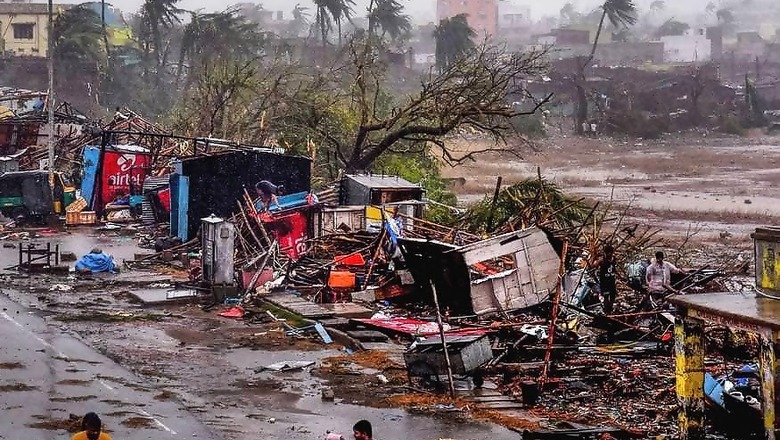
views
While the total number of monsoon days in Odisha which see “heavy to extreme rainfall days” have increased and now account for over half the total number of monsoon days, the number of “dry days are (also) increasing, found a study. On the other hand, “light-to-moderate rainfall days and wet days are decreasing”, found scientists from the School of Earth, Ocean and Climate Sciences at the Indian Institute of Technology, Bhubaneswar.
Scientists investigated the rainfall over the summer monsoon period in Odisha, with the primary aim of identifying heavy-to-extreme rainfall events and found that both, “the heavy-to-extreme rainfall days and dry days are increasing, while the light-to-moderate rainfall days and wet days are decreasing.” The study also found that the “Rate of increase in rainfall amount and number of wet-day are higher in the southern than northern Odisha”. This implies that the climate is “becoming drier as one moves from south to north and the gradient is also increasing with time.” The analysis suggested that it wasn’t just that the extreme rainfall days were more in “urban and highly elevated areas”, but that the “trend is increasing over those regions.”
The study, “Characteristics of observed rainfall over Odisha: An extreme vulnerable zone in the east coast of India” was published in the journal, Theoretical and Applied Climatology, by the authors Madhusmita Swain and UC Mohanty of the School of Earth, Ocean and Climate Sciences at the Indian Institute of Technology, Bhubaneswar, S. Pattanayak of the in National Centre for Medium Range Weather Forecasting and P Guhathakurta, at India Meteorological Department.
Odisha is highly vulnerable in terms of natural disasters, with it being declared disaster affected for 93 of the last 105 years. Of this, the state was affected 50-times by floods, 32 times by drought, and 11-times by cyclones, the study said. It concluded that the state “is experiencing a higher number of heavy-to-extreme rainfall days which is of an about 55% of the total number of monsoon days” and that this rate of increase was higher amongst all the meteorological subdivisions of central India. Thus, the study inferred, “Odisha is becoming more vulnerable to heavy-to-extreme rainfall days.”
The study pointed out that while the northern parts of Odisha were becoming drier, at the same time the southern parts were getting wetter and rainier. It said, “Dry days are more in north Odisha with an increasing trend, and at the same time, wet days are more in south Odisha with an increasing trend during the study period. Furthermore, the rate of increase of seasonal mean rainfall is higher over south Odisha compared with north Odisha. This infers that the climate of northern Odisha is drier than the southern Odisha and the gradient of drying condition is becoming stronger with time. This spatial analysis of the state and changes in the weather pattern, the study pointed out was “crucial for the identification of vulnerable zones prone to flood or drought conditions”.
India receives almost 80 percent of the annual rainfall during the southwest summer monsoon season (June-September) and, as a result, impacts the livelihood of nearly a fifth of the world’s population. The losses due to extreme rainfall and floods in India are about $3 billion per year, which is 10% of the global economic loss, said the study. It added, “There is a significant decrease in the frequency of moderate rainfall events, whereas the heavy rainfall activity has increased in the recent decade over different parts of the
Globe” and pointed out that other studies that had studied climate change impact had reported that “there will be most likely an increase in flood events over the Asian monsoon region and other tropical areas."



















Comments
0 comment